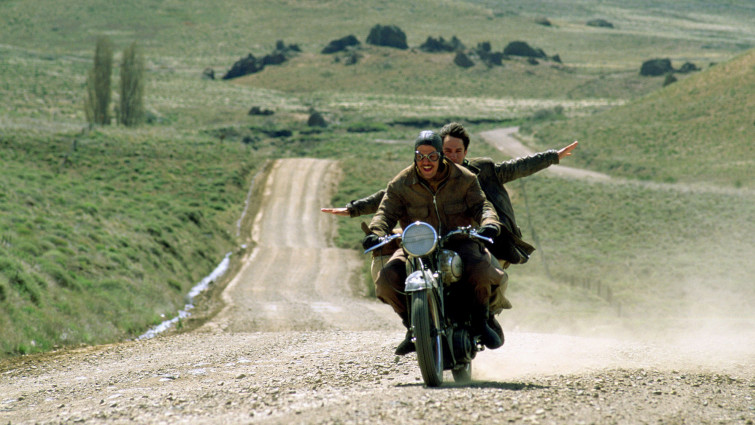

Member review

Diarios De Motocicleta (The...
Road movie based on the diaries of a young Che Guevara traveling through Argentina with his friend Alberto Granado.
Certificate
Duration121 mins
Review by
- Abbie, 17
- 4 reviews
Review by Abbie, 17
“The motorcycle diaries” is a Spanish biography-adventure film about two males (trained in medicine) who embark on an adventurous journey from their home in Buenos Aires along South America on ‘the mighty one’ who happens to be an old run down motorcycle. Set in 1952 the film is based on the book “The motorcycle diaries” by Ernesto “Che” Guevara. The cast speaks in fluent Spanish but with English subtitles, the storyline can be seen quite comical with the two males constantly insulting and joking with each other but underneath that aspect there is an important message to take. Directed by Walter Salles and produced by Edgard Tenenbaum among others. Cast includes Gael García Bernal as Ernesto "Fuser" Guevara and Rodrigo de la Serna as Alberto "Mial" Granado. The film was released in 2004. The film gets off to a slow but steady pace, and the first minutes of the film can come across a little boring. In the first scenes it becomes apparent that the two males are out to plan a big adventure, as they are seen packing, in good spirits. We see them wave farewell to their family before jumping on the back of a broken down motorcycle, which in the first couple of second of riding it nearly swerves in front of a bus, it’s quite amusing to the audience as it is clear that the bike named ‘the mighty one’ isn’t going to make it very far. The ambitious pair’s goal is to travel 14,000 kilometres in just four and a half months, just in time for ‘Mial’s’ 30th birthday. Through the first half an hour of the film we start to see the cracks in the pair’s plan. The motorcycle that they had planned their whole journey on was constantly in a mechanics and eventually named unfixable and they come to the devastating conclusion that they will have to walk the rest of their journey, prolonging it by months. The cracks in the friendship between the two ambitious males also start to show as insulting each other becomes more frequent, these scenes are quite comical to watch and although for a period it seems that the whole planned journey would fall apart because of the constant arguing with in a few minutes the pair are back laughing and joking together. During their visits across South America Mial and Ernesto are faced with the harsh reality of how horrendous some people’s lives are and how poor their living conditions are. The film starts to bring a sense of seriousness and understanding rather than an exciting and comical adventure. The two males are both from upper-middle class families and although are both in medicine, have not known understanding like this before. At the point in the film where they both volunteer in Peru we as the audience start to see a change in the pair especially Ernesto, who after seeing the divide between the healthy and the ill (Doctors and Nurses on one Island and the leper colony on another) beginnings to the see the injustice and discrimination that the earth has to offer and seems upmost offended when asked to wear gloves to meet the lepers on the other Island. When he and Mial beginning to see this they start doing everything in their power to allow the ill to feel worthy and still human so much so that an asthmatic Ernesto swims the dangerous berth of the river between the two islands to spend this birthday with the lepers. The cinematography in the last scene of the film may be simple but is extremely effective, after the titles announce the sorrowful CIA-assisted execution of Ernesto Guevara, we see the real life 82 year old Alberto Granado reflectively watching a plane take off in the distance just like he had done 52 years earlier. The film creates a strong atmosphere throughout and although for the first minutes the film was a little boring it picked up almost immediately. The storyline is solid and offers the audience a chance to see the real life harshness of the world that they do not see themselves.